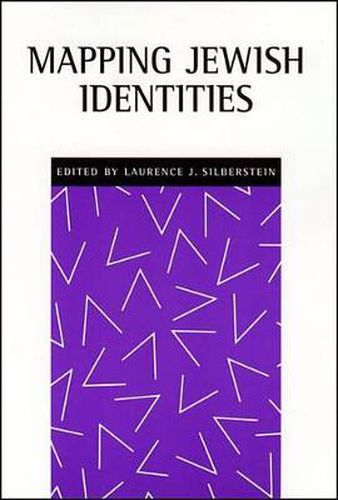Readings Newsletter
Become a Readings Member to make your shopping experience even easier.
Sign in or sign up for free!
You’re not far away from qualifying for FREE standard shipping within Australia
You’ve qualified for FREE standard shipping within Australia
The cart is loading…






Is Jewish identity flourishing or in decline? Community leaders and scholarly researchers continually seek to determine the attitudes, beliefs, and activities that best measure Jewish identity. At issue, according to these studies, is the very survival of the Jewish community itself. But such studies rarely ask what actually is being examined when we attempt to assess Jewish identity or any identity. Most tend to assume that identity is a preexisting, relatively fixed frame of reference reflecting shared cultural and historical experiences.
Drawing on recent work in such fields as cultural studies, poststructuralist theory, postmodern philosophy, and feminist theory, Mapping Jewish Identities challenges this premise. Contesting conventional approaches to Jewish identity, contributors argue that Jewish identity should be conceptualized as an ongoing dynamic process of becoming in response to changing cultural and social conditions rather than as a stable defining body of traits.
Contributors, including Daniel Boyarin, Laura Levitt, Adi Ophir, and Gordon Bearn, examine such topics as American Jews’ desires to connect with a lost immigrant past through photography, the complicated function of the Holocaust in the identity formation of contemporary Jews, the impact of the struggle with the Palestinians on Israeli group identity construction, and the ways in which repressed voices such as those of women, Mizrahim, and Israeli Arabs have changed our ways of thinking about Jewish and Israeli identity.
$9.00 standard shipping within Australia
FREE standard shipping within Australia for orders over $100.00
Express & International shipping calculated at checkout
Is Jewish identity flourishing or in decline? Community leaders and scholarly researchers continually seek to determine the attitudes, beliefs, and activities that best measure Jewish identity. At issue, according to these studies, is the very survival of the Jewish community itself. But such studies rarely ask what actually is being examined when we attempt to assess Jewish identity or any identity. Most tend to assume that identity is a preexisting, relatively fixed frame of reference reflecting shared cultural and historical experiences.
Drawing on recent work in such fields as cultural studies, poststructuralist theory, postmodern philosophy, and feminist theory, Mapping Jewish Identities challenges this premise. Contesting conventional approaches to Jewish identity, contributors argue that Jewish identity should be conceptualized as an ongoing dynamic process of becoming in response to changing cultural and social conditions rather than as a stable defining body of traits.
Contributors, including Daniel Boyarin, Laura Levitt, Adi Ophir, and Gordon Bearn, examine such topics as American Jews’ desires to connect with a lost immigrant past through photography, the complicated function of the Holocaust in the identity formation of contemporary Jews, the impact of the struggle with the Palestinians on Israeli group identity construction, and the ways in which repressed voices such as those of women, Mizrahim, and Israeli Arabs have changed our ways of thinking about Jewish and Israeli identity.